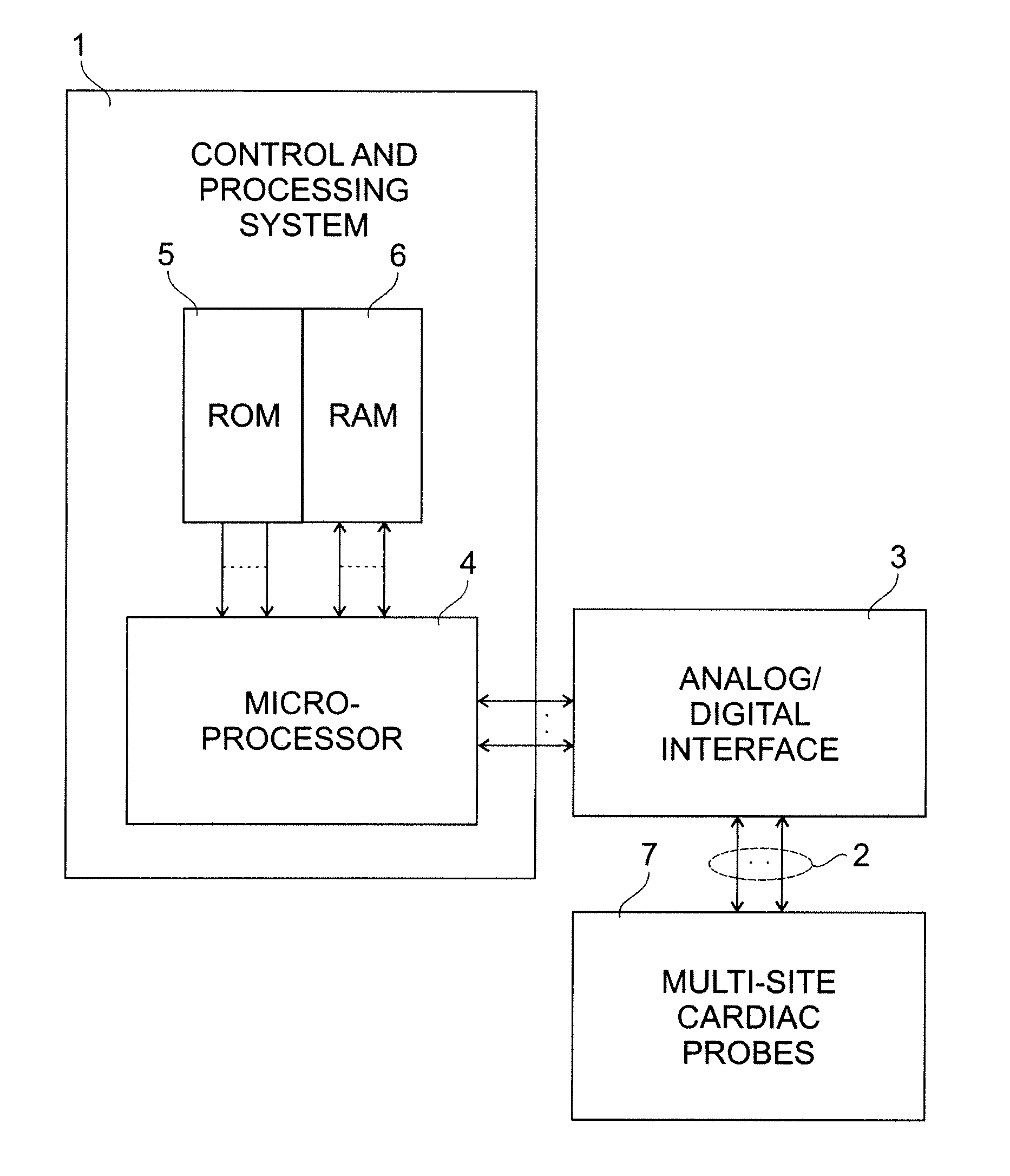Detection, analysis and treatment of ventricular pauses in an active implantable medical device for the treatment of heartbeat rate disorders
a technology ventricular pauses, which is applied in the field of active implantable medical devices for the treatment of heartbeat rate disorders, can solve the problems of persistent symptoms, device does not offer any help, and does not include any means of providing
- Summary
- Abstract
- Description
- Claims
- Application Information
AI Technical Summary
Benefits of technology
Problems solved by technology
Method used
Image
Examples
Embodiment Construction
[0017]The present invention can be advantageously implemented in an existing implant such as pacemaker, defibrillator and / or cardiovertor that is a microprocessor controlled device operating under the control of software, the particular functions of the invention being implemented by a suitable programming of the software.
[0018]FIG. 2 illustrates in block form the typical structure of a pacemaker of this type, including a control and processing system 1, multiple leads 2 connected to probes at cardiac sites, an analog / digital interface for transferring the analog signals from the leads 2 to the micro-processor 4 and vice versa, a micro-processor 4 for the processing of instructions necessary in implementing the algorithm of the present invention, ROM 5 and RAM 6 for storing the software instructions and data for implementing the algorithm of the present invention, and cardiac probes 7 placed at multiple cardiac sites as is typical of known multi-site pacemakers.
[0019]These devices, ...
PUM
 Login to View More
Login to View More Abstract
Description
Claims
Application Information
 Login to View More
Login to View More - R&D
- Intellectual Property
- Life Sciences
- Materials
- Tech Scout
- Unparalleled Data Quality
- Higher Quality Content
- 60% Fewer Hallucinations
Browse by: Latest US Patents, China's latest patents, Technical Efficacy Thesaurus, Application Domain, Technology Topic, Popular Technical Reports.
© 2025 PatSnap. All rights reserved.Legal|Privacy policy|Modern Slavery Act Transparency Statement|Sitemap|About US| Contact US: help@patsnap.com



